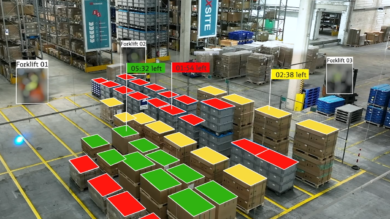We conclude our exploration of the DB Schenker Trend Report 2023 covering five key areas of analysis. Political & Legal, Economic, Social, Technological, and Environmental. In this update, our attention shifts to the Environmental dimension, a crucial aspect among the five areas unveiling the intricate connections between our environment and the rapidly evolving landscape of business and industry.
Climate Change concerns
As climate change concerns escalate, the impact of environmental factors on supply chains becomes increasingly evident. Dry summers, droughts, and other extreme weather events pose significant risks to businesses and consumers alike. These factors can lead to disruptions in supply chains, causing shortages, delays, and increased costs. Adopting strategies is what you can learn more about in the Trend Report. These insights support in safeguarding supply chains against the mounting challenges of climate change.
Signals of change
Recent instances of extreme weather events serve as stark reminders of the vulnerabilities faced in the face of climate change. The destructive impact of Hurricane Ida in the Gulf of Mexico Coast highlighted the susceptibility of industrial installations and the need for supply chain route diversification. The Texas freeze-induced energy blackout, the worst in U.S. history, brought rail transportation to a halt and severed vital supply chain links. Droughts, on the other hand, have become more frequent and prolonged, resulting in economic losses, and jeopardizing agricultural productivity. Devastating floods across Europe and Malaysia disrupted ports and supply chains, causing significant financial damages. Addressing the challenges of climate change requires innovative and collaborative approaches, including research and development partnerships with academia and startups, to drive the development of new technologies, strategies, and best practices in the supply chain industry.
As climate change continues to unfold, companies must embrace sustainability as a top priority. Reducing emissions, implementing resilient infrastructure, and devising contingency plans to mitigate disruptions are crucial measures for adapting to the evolving landscape of supply chain operations. Collaboration, innovation, and technology-driven initiatives are key to developing effective solutions and best practices in the face of climate change. Adaptation and sustainability will be vital for the future of supply chains. To download the full Trend Report, follow this link.
Published: June 2023










